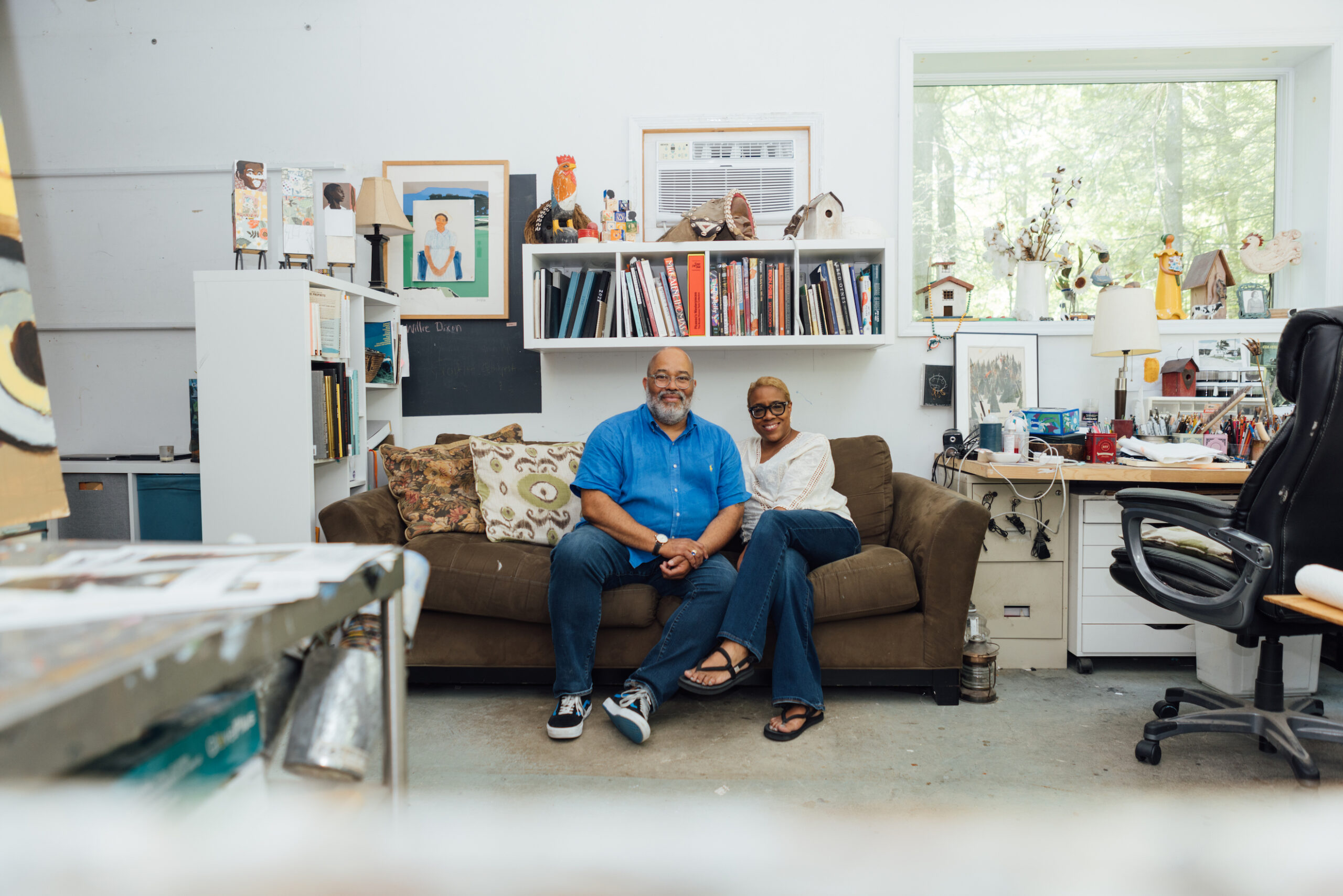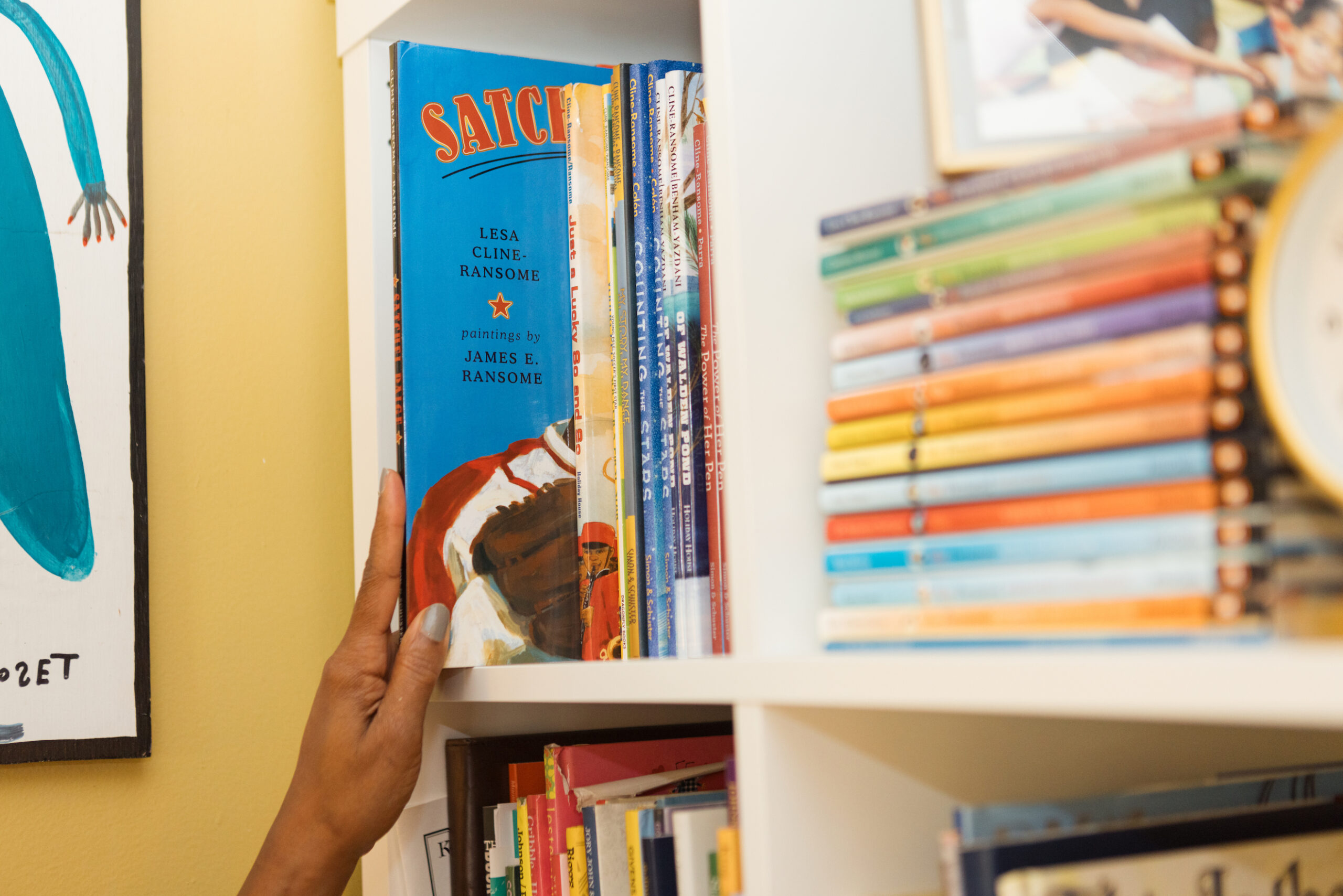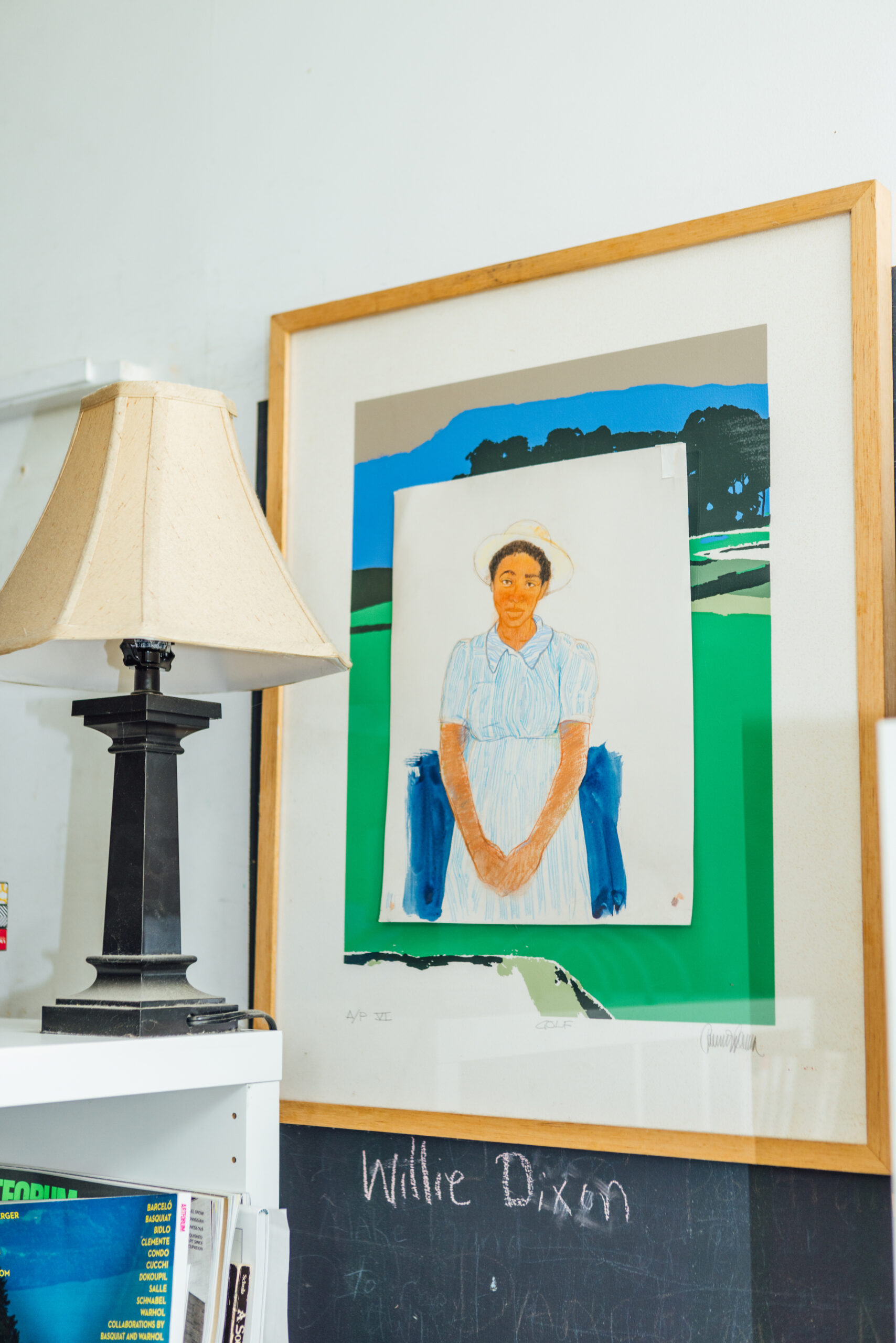It all began at a Purple Rain party at Pratt in 1985. James Ransome asked Lesa Cline to dance, and one thing led to another. The couple started dating, and helping each other with their assignments; James helped Lesa draw illustrations, and Lesa helped James write his essays. “That’s how our creative collaboration began,” says Lesa, calling from her and James’s house in Rhinebeck, New York, where they have lived for the last 20 years. “That’s how we knew that we could probably work together.”
Forty years and about as many books later, the married couple and author-illustrator duo have produced a wide array of children’s books amplifying the stories of groundbreakers throughout African American history. Their subjects range from contemporary legends (Game Changers: The Story of Venus and Serena Williams, Fighting with Love: The Legacy of John Lewis) to forgotten trailblazers (Before There Was Mozart: The Story of Joseph Boulogne, Chevalier de Saint-George). The pair’s newest book, They Call Me Teach: Lessons in Freedom, marks the latest chapter of a life and career rooted in early collaborations between dorm rooms.
The following Q&A has been edited and condensed.
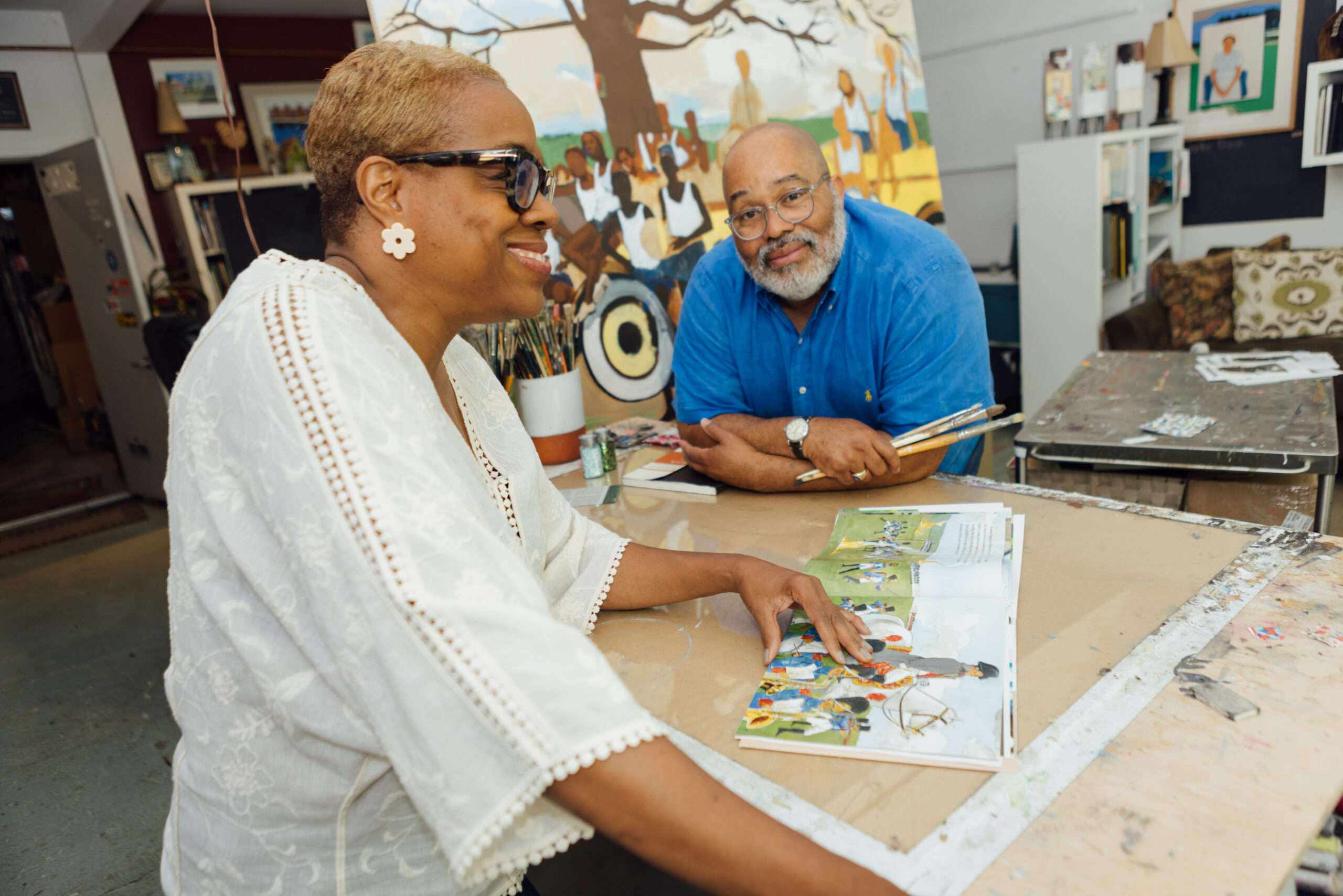
Tell me about your roles in creating a book and how you work together.
James Ransome: The honest answer is we really don’t work together like most people perceive we work together. Lesa writes a manuscript, which takes her six months, nine months, sometimes a year. She’ll read that manuscript to me; she won’t change anything for me—I tried that early on and she won’t do that. But maybe I’m not understanding some parts, and I’ll sort of give her my intake.
Once she finishes with the manuscript, then it goes on my list. She can write much faster than I can illustrate, so it’s probably a year before I can get to that manuscript. When I start illustrating the book, she doesn’t come in and give me feedback about the illustrations—I think she trusts me. And then I send them in to the publisher, and a book comes out a year later.
That said, we brainstorm and talk about the ideas or direction before Lesa starts writing. I’m always pitching her stories, and she rejects 90 percent of them, and then we sort of go from there. We also travel together to do research.
What’s great about working with Lesa is I know what she’s working on. I have access to the books and the places that she’s visiting. So I’m sort of prepped and primed for what’s coming in a year or two.
Lesa Cline-Ransome: We do a lot of speaking engagements together as well. But yes, the process of sitting side by side and talking and working next to each other never happens. It’s kind of a disconnected process.
JR: It’s pretty standard for the industry.
LCR: I think what publishers like—and I think it is true—is that there is a marriage of art and words, because we understand each other’s intention for the work. And so in that way, it differs from when you’re working with an illustrator or writer that you don’t know.
Could you share a bit about how personal and collective histories have informed your work together?
LCR: When I’m writing a pitch on a book and writing a story about someone’s life, I feel like I have to do research around the subject matter. So I don’t want to just research what their personal accomplishments were and how they reached that goal in a very linear way. I like to look at a broader picture.
If someone were to write the biography of my life, you would have to know that I’m from Massachusetts. Being a New Englander is a huge part of who I am. And I think being a Southerner is a huge part of who James is. I think your birth order plays a huge role in who you are.
When I wrote the story of Venus and Serena Williams [Game Changers], for example, the very first thing I did was to read the story of their father’s life, and his dream for his daughters, and how much that meant to him and the partner he chose in order to get these two daughters. His dream became their dream.
I have to have this broad picture, understand everything that’s around the subject in order to write the subject’s life. So the research is pretty extensive and far-reaching.
JR: I like variety, and I like a challenge. To me, it is all sort of a puzzle. I think that’s what interests me about making art. You’re trying to communicate ideas, and you have to figure out how to solve that problem. It’s a challenge to use different materials, to experiment with different layouts or design elements, and to make a visual story interesting.
Lesa and other writers have these beautiful words. I think about reluctant readers or people who don’t have a real passion to read everything that’s put in front of them. My job is to make the pictures interesting enough that those people will want to read the text.
The African American experience is something I’m really interested in, and portraying that in a positive light. So I’m also trying not to just repeat the same type of images that I grew up seeing. There must be a different way. With the John Lewis book [Fighting with Love: The Legacy of John Lewis], I tried to show people at a lunchroom counter; I’ve done those pictures before, and I thought there must be a different way to do them than just having [Black] people sitting at a counter, [white] people putting things on top of their heads and on their shoulders, and being yelled at. So that was the kind of challenge I like, especially at this point in my career.
LCR: I just want to touch upon one other part of the question. You mentioned our collective histories. Both of us are coming from a background of African American ancestry, where often the narrative has been what our families are not and what we are not as people: that we don’t value education, that we don’t value family.
So a lot of the stories that I write are a type of counternarrative, because that has not been our experience. I grew up in a family that really valued education. I grew up in a household where education was incredibly important to my parents, to my grandparents, to my aunts and uncles. For most of the African American families that I know, education has been something very hard-fought and -won. And so we don’t take it lightly.
And so in each of the stories that I write, I’m always looking for parts of a story that emphasize that. You’ll see elements or themes in much of my work that emphasize and highlight the struggles that we faced, the way we still value education, and particularly the way we value families, and the ways our families are strong and have helped to see us through very difficult times.
“We support each other through the highs and lows. And with anyone who’s creative, there is doubt. . . . it is wonderful to have someone there who understands what you’re going through.”
James Ransome
How have you supported each other in difficult times?
LCR: To be two freelancers and raise a family of four I think in itself was a miracle. And looking back now, our children are 23, 27, 28, and 30 years old. James and I still sometimes look at each other and say, “How did we do that?”
I think that in itself was really difficult. I will say, just for my part, that there’ve been many times when it’s been very difficult to get traction as a writer and also as a mother. There were many times when I felt like giving up—but the beauty of having a partner who’s also a creative person and a freelancer is I would come to James and I would say, “This isn’t working. I don’t know if I can do this anymore.” And James, who is very much a straight shooter, would say, “Knock it off. You are going to get through. This is a difficult time. Go back in there and keep working.”
I needed that; I needed somebody who understands that this is difficult and that there are highs and lows in creative work, especially in freelance. But if you keep working hard, and do your best, you can make it through to the other side.
JR: Yeah, we support each other through the highs and lows. And with anyone who’s creative, there is doubt. Sometimes when we’re presenting, I’ll say, “Lesa, this is going to be a tough one,” and she’ll carry the load. Or vice versa. But it is wonderful to have someone there who understands what you’re going through.
And sometimes it’s really helpful, when you want to send an angry reply to an editor’s revisions and your partner says, no, no, no, no, no.
LCR: No, no, no. Don’t do that!
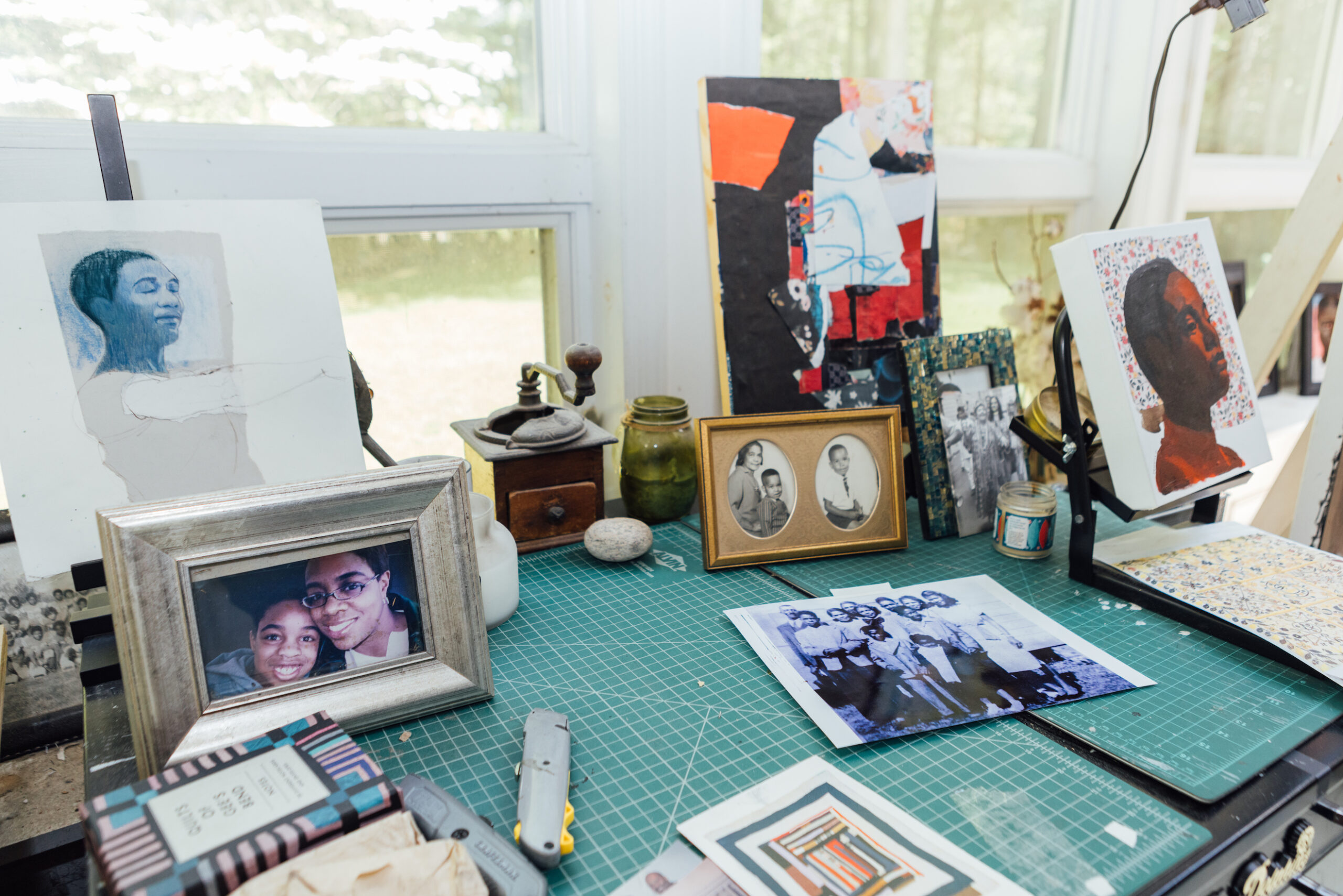
What was a piece of advice you received at Pratt that stayed with you?
LCR: The best piece of advice came from a professor who didn’t teach in either of our departments. We took an African American studies class with Professor [Edward] Nyankanzi, and his class was invaluable to the two of us. We still reference him on occasion, but one of the things he taught us both was the importance of knowing your history. It was the first African American studies course I had taken. I grew up outside of Boston, and trust me when I say, in a community that probably didn’t believe that African Americans made contributions to the history of this country.
And Nyankanzi was there offering students a really strong sense of themselves and the truth of this country and the truth of Black people and their contributions in this country. He talked all the time about the importance of this and how it shapes your identity. It was, I think, a true awakening for the both of us. I’d already been a huge fan of African American Black writers, but his education really rounded out my education at Pratt. His class changed me forever. I will say also, I learned while I was at Pratt to be fearless creatively.
JR: I would say that from Nyankanzi, what I got—and this may not be very popular—is the idea that nothing is given to you. Don’t sit back and wait for something; go out and get it. He made a statement, which I never forgot about, using elections as a reference. He said, no one’s elected. You go out and you win the election.![]()
Photos by Dahlia Dandashi
